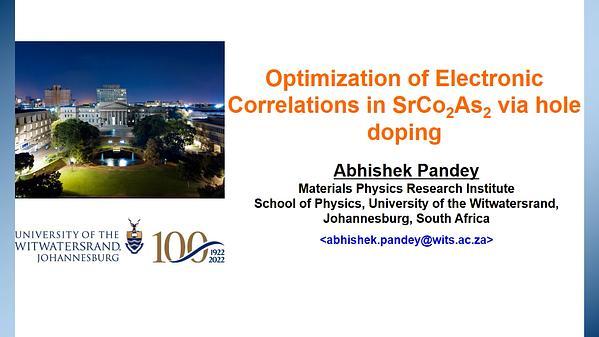Would you like to see your presentation here, made available to a global audience of researchers?
Add your own presentation or have us affordably record your next conference.
The proximity-coupling of a chiral non-collinear antiferromagnet (AFM) (1,2) with a singlet superconductor allows spin-unpolarized singlet Cooper pairs to be converted into spin-polarized triplet pairs (3,4) thereby enabling non-dissipative, long-range spin correlations (3,4). The mechanism of this conversion derives from fictitious magnetic fields that are created by a non-zero Berry phase (5) in AFMs with non-collinear atomic-scale spin arrangements (1,2). In this invited talk, I will describe our recent achievement of long-ranged lateral Josephson supercurrents through an epitaxial thin film of the triangular chiral AFM Mn3Ge (6). The Josephson supercurrents in this chiral AFM decay by approximately 1–2 orders of magnitude slower than would be expected for singlet pair correlations (3,4) and their response to an external magnetic field reflects a clear spatial quantum interference. Given the long-range supercurrents present in both single- and mixed-phase Mn3Ge, but absent in a collinear AFM IrMn, our results pave away for the topological generation of spin-polarized triplet pairs (3,4) via Berry phase engineering (5) of the chiral AFMs.
If time permits, I will also present our experimental realization of spin-triplet supercurrent spin-valves (SVs) (7,8) in chiral antiferromagnetic Josephson junctions (JJs) and a direct current superconducting quantum interference device (dc SQUID), the latter of which reveals an intriguing 0-to-π phase transition (8) on top of the SV response to out-of-Kagome plane magnetic fields.
References:
(1) Nakatsuji, S. et al. Nature 527, 212 (2015),
(2) Nayak, A. K. et al. Sci. Adv. 2, e1501870 (2016),
(3) Linder, J. & Robinson, J. W. A. Nat. Phys. 11, 307 (2015),
(4) Eschrig, M. Rep. Prog. Phys. 78, 104501 (2015),
(5) Xiao, D., Chang, M.-C. & Niu, Q. Rev. Mod. Phys. 82, 1959 (2010),
(6) Jeon, K.-R. et al, Nat. Mater. 20, 1358 (2021),
(7) Banerjee, N. et al. Nat. Comm. 5, 4771 (2014),
(8) Glick, J. A. et al. Sci. Adv. 4, eaat9457 (2018).
